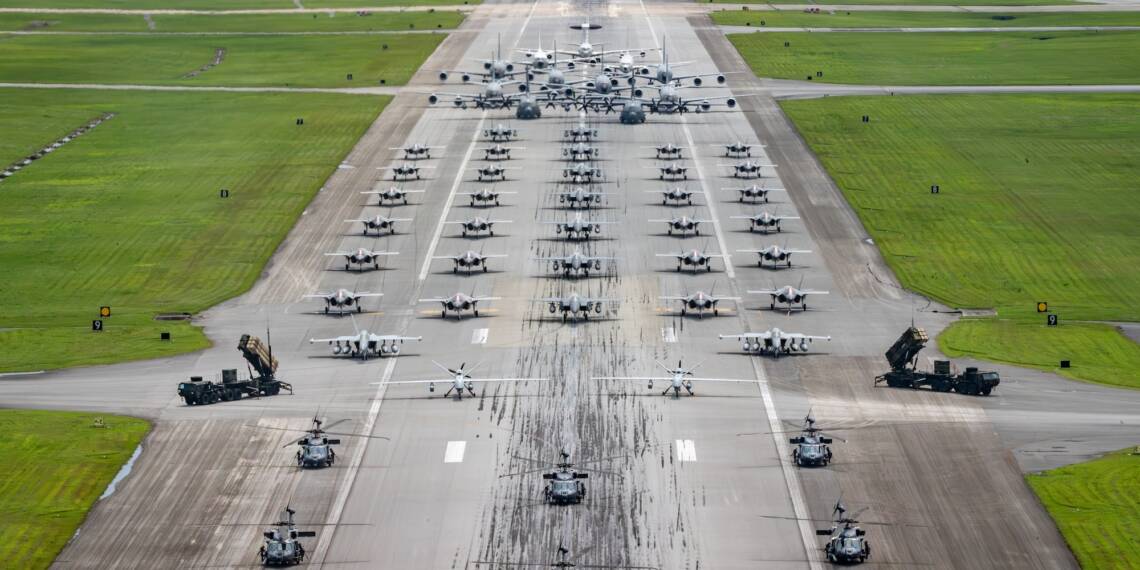An explosion at the U.S. military’s Kadena Air Base in Okinawa, Japan on Monday has left four Japanese soldiers injured, reigniting concerns about military safety, base security, and the long-standing tensions surrounding America’s military presence in Japan. The blast occurred around 11:15 a.m. at a munition’s storage site used to process unexploded ordnance, remnants from World War II. The injured members of Japan’s Ground Self-Defense Force (GSDF) were conducting routine rust-removal work when the explosion occurred.
According to Japanese officials, the injuries—limited to fingers and not life-threatening—were treated at a local hospital. The U.S. military has so far not reported any injuries to American personnel and has confirmed the incident was isolated within the storage depot.
Local and Historical Context
Kadena Air Base is the largest U.S. Air Force installation in the Asia-Pacific and a cornerstone of U.S.-Japan defense strategy. The base has long been a point of friction between Okinawan residents and both the Japanese and U.S. governments, with complaints ranging from noise pollution to safety risks and environmental concerns. Over 70% of U.S. military installations in Japan are located on Okinawa, despite the island accounting for less than 1% of the country’s total land area.
Monday’s explosion, while seemingly accidental, adds to a list of incidents that continue to inflame local opposition to the U.S. presence. It also places pressure on Japanese Prime Minister Shigeru Ishiba, who is attempting to maintain a delicate balance between regional defense commitments and domestic political accountability.
Geopolitical Implications
While the explosion itself does not appear to be the result of a hostile act, its timing is significant. Tensions in the Asia-Pacific are on the rise due to several converging factors:
China’s assertiveness in the Taiwan Strait and South China Sea, which has prompted the U.S. to strengthen its forward-deployed military assets.
North Korea’s continued missile tests, which have included simulations of tactical nuclear strikes on South Korea and U.S. bases in Japan.
A growing trilateral alliance between the U.S., Japan, and South Korea, meant to serve as a counterbalance to China and North Korea, and heavily reliant on infrastructure like Kadena.
Any incident at a facility like Kadena reverberates far beyond Japan’s borders. Regional adversaries may interpret operational mishaps as signs of vulnerability or opportunities to test the limits of U.S.-Japan security cooperation.
Furthermore, the blast is likely to fuel political debates both in Tokyo and Washington about the sustainability of large, centralized bases in geopolitically sensitive regions. It could also be used by China as propaganda in its regional narrative that U.S. bases destabilize, rather than secure, Asia.
Investigations into the cause of the explosion are ongoing, with both Japanese and U.S. authorities pledging transparency. Still, the incident underscores the persistent danger of ordnance handling and the broader strategic risks of concentrating military power in volatile zones.
The region is already a hotbed of major powers asserting their presence, Japan, China, Russia, USA, South Korea, North Korea, Taiwan all have an influence in the region such events are sure to rock the already volatile geostrategic situation.
As regional power dynamics continue to shift, seemingly isolated events like this explosion can have ripple effects, shaping public opinion, influencing foreign policy, and altering the delicate military balance in the Asia-Pacific.








